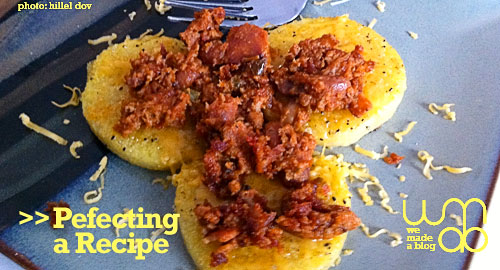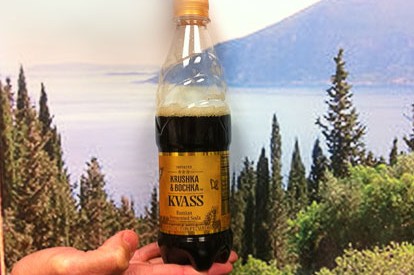Simple Fish Dish
I’m a really big fan of single-pan (or pot) cooking. Sometimes I go to extra-lengths just to devise a way of dirtying only one pot, one knife and one cutting board. Cooking is fun, cleaning isn’t. Plain and simple.
Along the same lines, I really like creating simple dishes. Only a handful of spices to coat a single protein and a small side. And if it doesn’t take too long, even better.
To make this dish you need:
1.) Tilapia fillet (one per person)
2.) Beer
3.) Chili powder (preferably Mexican)
4.) Salt & Pepper
5.) One shallot (more if you’re making for a few people)
6.) A cucumber
7.) A lemon
Take the fillet and rinse under water. Maybe I’m paranoid but I always rinse fish and poultry. Pat dry.
Take a single large cutting board and place the fish at one end. I cut my cucumber and shallot at the other end; if this is too close to cross-contamination for you, place the fish on a separate dish.
Wherever your fish is, season with a two-finger pinch of salt (we’re not including your thumb in the two-finger pinch equation). Then, lightly season with black pepper. Next, take your chili powder and hold the shaker at least two feet above the fish and coat the whole fish with a single layer. FYI, adding seasoning from a height helps spread it out better, you should do this with the salt and pepper as well.
Flip the fish and do it all again to that side.
While your fish is sitting, grab your frying pan, preferably cast-iron, and add olive oil. You don’t need a lot of oil! But the measurement completely depends on the size of your frying pan. You need just enough olive oil to easily coat the pan. Turn the burner to high.
While the pan is getting hot, slice your shallot. Usually you only need half of a bulb. Make 1/4 inch slices. Take the slices and cut in half.
Put your hand about ten inches over the pan, if you can’t keep it there for more than a few seconds, you have the right temperature. Now throw in the sliced shallot. The shallot only needs a minute of cooking to get soft at that heat. You don’t want them to brown yet, just get soft.
Once the shallot is softened, add the tilapia fillet right in the middle of the pan. Clear a spot with the shallot so the fish properly sears. Cook the fish on each side for about two minutes. (A fish-specific spatula is extremely helpful. They’re the ones that are made of metal and have big slots running through them. Their flexibility makes handling flaky fish a lot easier than a firm spatula would.)
Once you have a nice, dark-brown color on your fish, lower the heat and cover with a pot-top. Let the fish cook this way for another 5 minutes, flipping once.
I don’t have a top that properly covers my pan. So, I take the spatula and place the handle on the counter so that the business-end is hanging over the edge of the pot. (Pointing toward the center of the pan.) Take the ill-sized top and place in the pan with one edge being lifted up by the spatula. This will help the fish cook through without burning it or needing to warm up your oven.
During that five minutes, peel and slice your cucumber. This will be your side. And trust me it works. The crunch of the cucumber pairs properly with the soft fish and it’s natural sweetness compliments the heat of the chili powder.
When the fish is ready we take it out leaving the shallot behind. If you aren’t sure how done your fish is, try cutting it with your spatula. If it puts up resistance, you’re far from it being finished and it probably needs ten more minutes. If it goes through but you still see pink, let it go for another minute or two. Once finished, place the fish on the plate you will be serving it on.
Now that the fish is cooked, turn the heat off because we’re going to deglaze the pan. This recipe calls for beer, so I assume you’ve cracked one at the onset of your preparation. Take what’s left, you need around three ounces, and pour it into the pan.
You should instantly see the beer foam and sizzle. Take your spatula and start scraping. You want everything that’s stuck to the bottom of the pan to mix into the beer along with the shallots. Once the beer stops fizzing and foaming, you’re done. Deglazing shouldn’t take more than one minute.
Pour the liquid from the pan over your fish. Take a wedge out of your lemon and squeeze over the fish. Place the cucumber to the side of the fish. (A pinch of salt on the cucumber never hurts…)
Done.
If you properly deglaze the pan and add the lemon, I promise you will want to lick the plate. This entire meal takes 15 minutes, tastes delicious and is pretty healthy too.
Enjoy!













